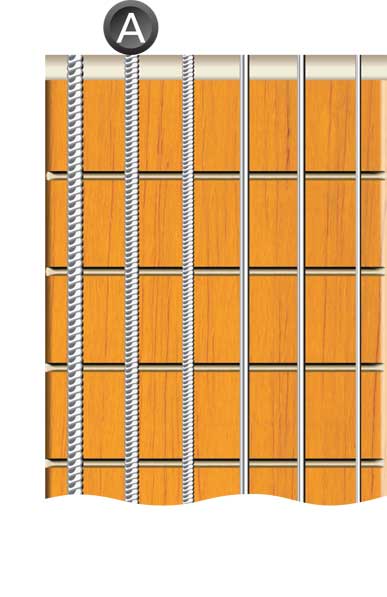
Continuous Right Hand Movement
All of the rhythm patterns that you have so far studied involve continuous right hand movement. This right hand movement can be represented thus:

If you consider the most basic rhythm  the right hand is actually playing four down strums across the strings (producing the sound) and also playing four up strums away from the strings. The up strums, which produce no sound, are represented by broken wedge marks n . Hence the basic rhythm can be represented thus:
the right hand is actually playing four down strums across the strings (producing the sound) and also playing four up strums away from the strings. The up strums, which produce no sound, are represented by broken wedge marks n . Hence the basic rhythm can be represented thus:

Illustrating continuous right hand movement. This principle is important in the following rhythm, where a down strum is played away from the guitar on the third beat (indicated by the broken wedge mark):

Say aloud: down up down up … up down up
This rhythm is extremely important, and should be applied to all progressions so far studied. You should not proceed until it is mastered.
Rhythm Pattern


Notes On The Fifth String






The notes on the fifth string use ledger lines, which are small horizontal lines upon which notes are written when their pitch is above or below the staff.
The Eighth Note

This is an eighth note, or quaver, worth half a count. Two eighth notes, which are sometimes joined by a bar, 6 have the same value as a quarter note (1 beat). Eighth notes are counted:

which can be compared to the timing of a bar of down/up strums:

